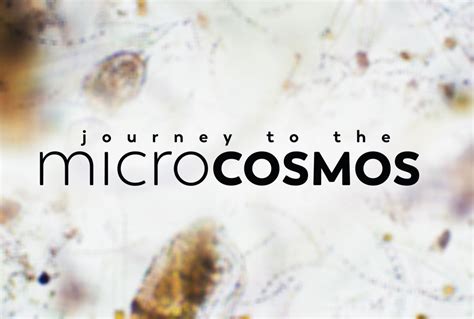Have you ever wondered about the hidden world of microorganisms that exists all around us? From the bacteria on your skin to the viruses that cause illness, the field of microbiology is a fascinating and complex realm waiting to be explored. In this blog post, we will embark on a journey into the microcosmos, delving into the microscopic world of microbiology research. We will uncover the tools and techniques that scientists use to study these invisible organisms, explore the building blocks of life found within microbes and cells, and delve into the classification and genetics of microorganisms. Additionally, we will discuss the intricate relationship between microbes and the human immune system, the ecological roles of microorganisms, and their applications in medicine. Join us as we unravel the mysteries of the microbial world and discover the frontiers of microbiology, where new territories are constantly being explored.
Table of Contents
Unveiling the Invisible: Introduction to Microbiology
Microbiology is the study of microorganisms, which are organisms that are too small to be seen with the naked eye. These include bacteria, viruses, fungi, and protozoa. Despite their invisibility to the human eye, microorganisms play a crucial role in various aspects of our lives, from shaping the environment to impacting human health and disease.
Microbiology encompasses several sub-disciplines, including bacteriology, the study of bacteria; virology, the study of viruses; mycology, the study of fungi; and parasitology, the study of parasites. Each of these sub-disciplines offers a unique perspective on the diversity and significance of microorganisms.
One of the key aspects of microbiology is the understanding of microbial structure, function, and behavior. This includes exploring the complex biochemical processes that occur within microorganisms, as well as their interactions with other living organisms and the environment. The field of microbiology also delves into the genetic makeup of microorganisms, providing insights into their evolution and adaptation.
As we continue to unveil the invisible world of microorganisms, it becomes clear that microbiology is not only a fascinating scientific field but also a crucial area of research that has far-reaching implications for human health, agriculture, industry, and the environment.
Delving into the Microscopic World: Tools and Techniques
Microbiology is a fascinating field that allows us to explore the world beyond what the naked eye can see. In order to delve into this microscopic world, scientists rely on a variety of tools and techniques to study microorganisms and their interactions with the environment.
One of the most commonly used tools in microbiology is the microscope. This instrument allows scientists to observe microorganisms at a level of detail that would otherwise be impossible. By using different types of microscopes, such as light microscopes and electron microscopes, researchers can visualize the structures and behaviors of bacteria, viruses, and other microbes.
In addition to microscopes, scientists also rely on a variety of techniques to study microorganisms. Culturing microbes in the lab, for example, allows researchers to observe their growth and behavior under controlled conditions. Other techniques, such as polymerase chain reaction (PCR) and DNA sequencing, enable scientists to analyze the genetic makeup of microorganisms and gain insight into their evolutionary history and diversity.
Overall, these tools and techniques are essential for microbiologists to uncover the secrets of the microscopic world and advance our understanding of the diverse microbial life that exists all around us.
The Building Blocks of Life: Microbes and Cells
Microbes and cells are the fundamental building blocks of life on Earth. Microbes, including bacteria, archaea, protists, and fungi, are the most abundant and diverse forms of life. They play crucial roles in various biogeochemical cycles, such as carbon and nitrogen cycling, which are essential for sustaining life on our planet.
Cells, on the other hand, are the basic structural and functional units of all living organisms. They are incredibly diverse, varying in size, shape, and function. From the single-celled bacteria to the complex eukaryotic cells found in plants, animals, and humans, cells come in many different forms and serve a wide range of functions.
Microbes and cells interact in intricate ways, with microbes often living inside and around cells, influencing their behavior and function. For example, the human gut is home to trillions of microbes that play a vital role in digestion, nutrient absorption, and immune function. Furthermore, many cells rely on microbes for essential functions, such as nitrogen fixation in plants and nutrient recycling in ecosystems.
Understanding the relationship between microbes and cells is not only crucial for advancing our knowledge of biology and ecology but also for improving human and environmental health. By studying these building blocks of life, scientists can develop new therapies, technologies, and strategies for addressing global challenges, such as disease, food security, and environmental sustainability.
From Bacteria to Viruses: Classification of Microorganisms
Microorganisms are diverse and abundant forms of life that are not visible to the naked eye. They include bacteria, viruses, fungi, and other microbes that play crucial roles in various ecosystems. The classification of microorganisms is essential for understanding their distinct characteristics and functions within the microbial world.
One of the main groups of microorganisms, bacteria, are single-celled organisms that can be found in almost every environment on Earth. They are classified based on their shape, structure, and metabolic characteristics. Bacteria can be further categorized into different phyla, classes, and orders, highlighting their diversity and complexity.
On the other hand, viruses are not considered living organisms, as they cannot carry out metabolic processes on their own and rely on a host cell to replicate. However, they are essential players in the field of microbiology and are classified based on their genetic material, structure, and method of replication. Understanding the classification of viruses is crucial for studying their impact on human health and the environment.
Overall, the classification of microorganisms into distinct groups, such as bacteria and viruses, provides a framework for understanding their evolutionary relationships, ecological roles, and potential applications in various fields, including medicine, agriculture, and biotechnology.
Unraveling the Mysteries: Microbial Genetics and DNA
Unraveling the mysteries of microbial genetics and DNA is a fascinating journey into the world of tiny microbes and their intricate genetic makeup. Microbes, such as bacteria, archaea, fungi, and viruses, play a crucial role in various biological and ecological processes. Understanding the genetic mechanisms that govern their behavior and evolution is essential for unraveling the complexities of microbial life.
Microbial genetics explores the genetic makeup of microorganisms, including the study of their DNA, RNA, and gene expression. The field of microbial genetics has made significant advancements in recent years, thanks to the development of sophisticated molecular biology techniques and sequencing technologies.
One of the key areas of research in microbial genetics is the study of horizontal gene transfer, which allows microbes to acquire new genetic material from other organisms, including distantly related species. This process has profound implications for microbial evolution and adaptation to changing environments.
Furthermore, the study of microbial DNA has shed light on the diversity and complexity of microbial communities in various habitats, from deep-sea hydrothermal vents to human gut microbiota. The ability to sequence microbial genomes has revolutionized our understanding of the genetic potential of these tiny organisms and their role in shaping ecosystems.
The Battles Within: Microbes and Human Immunity
Microbes and human immunity have been engaged in an ongoing battle since the dawn of life on earth. The human body is constantly exposed to a myriad of microorganisms, including bacteria, viruses, fungi, and parasites, which have the potential to cause harm. In response, the immune system, consisting of a complex network of cells, tissues, and organs, works tirelessly to protect the body from these invaders.
This battle between microbes and human immunity is a fascinating display of the body’s ability to recognize and defend against foreign agents. Microbes are quick to adapt and evolve, constantly presenting new challenges to the immune system. In turn, the immune system responds with diverse defense mechanisms, including antibodies, white blood cells, and other specialized cells that target and neutralize harmful microbes.
However, this battle is not always one-sided. While the immune system is usually successful in defending the body against microbial invaders, there are occasions when microbes can evade or overpower the immune response, leading to infections and diseases. This ongoing struggle between the two forces highlights the dynamic nature of the relationship between microbes and human immunity.
Understanding the intricacies of this battle is crucial for the development of new medical treatments and vaccines to combat infectious diseases. Research in the field of microbial immunology continues to uncover new insights into the interactions between microbes and the human immune system, paving the way for innovative strategies to enhance immune responses and protect against microbial threats.
Microbes on the Move: Understanding Microbial Ecology
Microbial ecology is the study of the relationships and interactions between microorganisms and their environment. This field encompasses a wide range of microscopic organisms, including bacteria, archaea, fungi, protists, and even some viruses. Understanding microbial ecology is crucial for gaining insight into the fundamental processes that govern the behavior and dynamics of these diverse microorganisms.
Microbes are constantly on the move, shaping and being shaped by the environments they inhabit. From the depths of the ocean to the soil beneath our feet, microorganisms play a crucial role in nutrient cycling, energy flow, and ecosystem stability. Through their metabolic activities, microbes influence the physical and chemical properties of their surroundings, making them central players in ecological processes.
Studying microbial ecology involves examining the complex networks of interactions between microorganisms and their abiotic and biotic environments. Scientists utilize a variety of tools and techniques, such as high-throughput DNA sequencing, metagenomics, and stable isotope probing, to unravel the intricate web of microbial communities and their ecological functions.
By understanding the movement and behavior of microbes within different habitats, researchers can gain valuable insights into how microbial communities respond to environmental changes, nutrient availability, and anthropogenic disturbances. This knowledge is crucial for addressing pressing environmental issues, including climate change, pollution, and the sustainability of natural resources.
Applications in Medicine: Microbes as Disease Agents
Microbes play a crucial role in the field of medicine, serving as disease agents that can cause a wide range of infections and illnesses in humans. From bacteria and viruses to fungi and parasites, these microscopic organisms have been responsible for some of the most prevalent and deadly diseases known to mankind.
Infectious diseases such as tuberculosis, HIV/AIDS, malaria, and influenza are all caused by microbial agents. Bacteria, such as Streptococcus and Staphylococcus, can cause various types of infections, while viruses like Ebola and Zika virus have sparked global health crises. These disease-causing microbes have been a constant challenge for medical professionals and researchers, leading to ongoing efforts to understand their mechanisms of infection and develop effective treatments.
Additionally, certain types of fungi and parasites, such as Candida and Plasmodium, can also lead to serious infections in humans. These microbial pathogens are able to thrive in different environments within the human body, causing a range of symptoms and health complications. Understanding the role of these disease agents is essential for the prevention and treatment of microbial infections.
Microbes as disease agents are not only a threat to human health, but also to the health of animals and plants. Livestock diseases caused by bacteria and viruses can have significant economic impacts, while plant pathogens can devastate crops and affect food security. Therefore, the study of microbial disease agents is essential for the development of strategies to protect public health and ensure global food security.
Fighting the Microbial Menace: Antibiotics and Antimicrobial Resistance
Antibiotics have long been hailed as the wonder drugs of modern medicine, effectively combating bacterial infections and saving countless lives. However, the misuse and overuse of antibiotics have led to the rise of antimicrobial resistance, posing a significant threat to global public health.
The misuse of antibiotics, whether in human medicine or in agriculture, has accelerated the development of drug-resistant bacteria. This means that the antibiotics we rely on to treat infections are becoming less effective, leading to prolonged illnesses, increased healthcare costs, and higher mortality rates.
Furthermore, the emergence of multidrug-resistant bacteria, such as Methicillin-resistant Staphylococcus aureus (MRSA) and extensively drug-resistant tuberculosis, presents a formidable challenge for healthcare professionals around the world. This has prompted the urgent need for the development of new antibiotics and alternative treatment strategies to combat these resilient microbial foes.
Addressing antimicrobial resistance requires a multifaceted approach, encompassing better stewardship of existing antibiotics, investment in research and development of new antimicrobial agents, and public education on the prudent use of these life-saving drugs. It is also crucial to raise awareness about the importance of infection prevention and control measures to reduce the spread of drug-resistant bacteria in healthcare settings and communities.
Frontiers of Microbiology: Exploring New Territories
Microbiology has come a long way since its inception, and it continues to evolve as scientists delve deeper into the frontiers of this fascinating field. The study of microbes has broadened our understanding of the world around us and has opened up new territories for exploration.
One of the most exciting developments in the frontiers of microbiology is the discovery of novel microbial species in extreme environments such as deep-sea vents, arctic ice, and acidic hot springs. These microbes have expanded our understanding of the conditions under which life can exist and have raised new questions about the origins of life on Earth.
Furthermore, advances in microbial ecology have allowed scientists to explore the intricate relationships between microbes and their environments. By studying these interactions, researchers have gained insights into the ecosystems that these microbes inhabit and have uncovered new ways in which microbes impact the world around us.
As we continue to push the frontiers of microbiology, new technologies and methodologies are being developed to aid in our exploration of the microbial world. From advanced imaging techniques to cutting-edge genomic tools, these innovations are allowing scientists to venture into new territories and uncover the mysteries that lie within.





